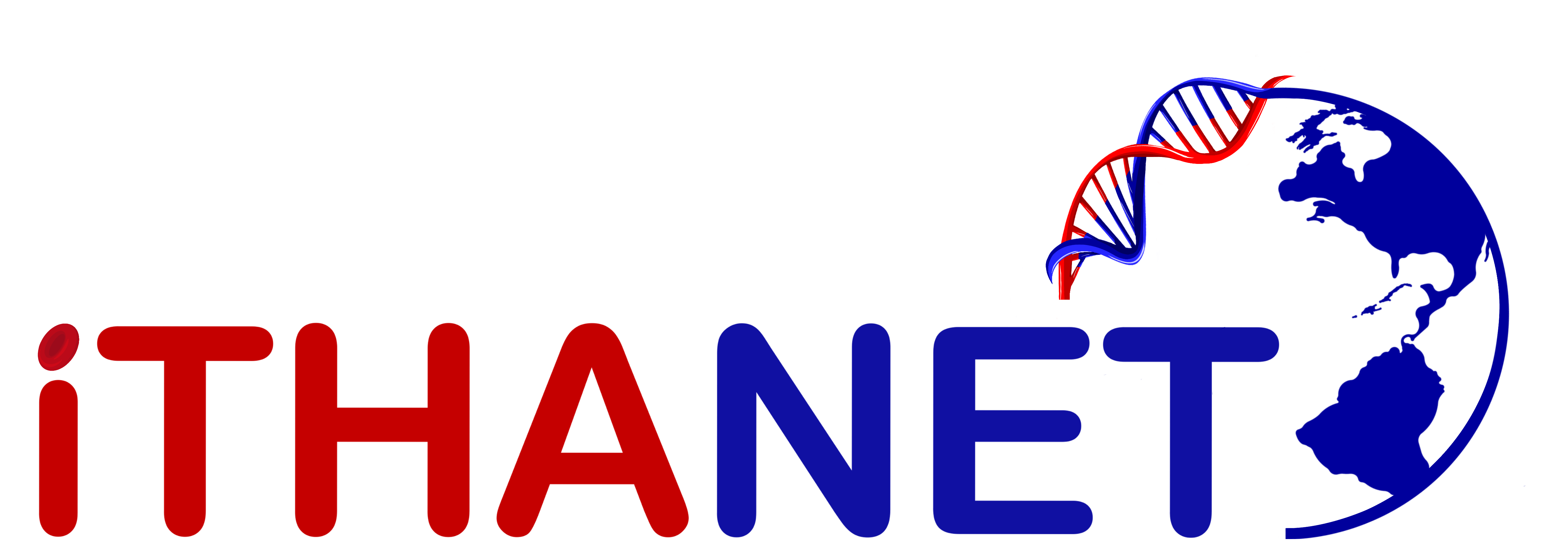IthaID: 1307
Names and Sequences
| Functionality: | Globin gene causative mutation | Pathogenicity: | Pathogenic / Likely Pathogenic |
|---|---|---|---|
| Common Name: | CD 145 TAT>AAT | HGVS Name: | HBB:c.436T>A |
| Hb Name: | Hb Osler | Protein Info: | β 145(HC2) Tyr>Asn |
| Also known as: |
We follow the
HGVS sequence variant nomenclature
and
IUPAC standards.
Context nucleotide sequence:
TGTGGCTAATGCCCTGGCCCACAAG [A/T] ATCACTAAGCTCGCTTTCTTGCTGT (Strand: -)
Protein sequence:
MVHLTPEEKSAVTALWGKVNVDEVGGEALGRLLVVYPWTQRFFESFGDLSTPDAVMGNPKVKAHGKKVLGAFSDGLAHLDNLKGTFATLSELHCDKLHVDPENFRLLGNVLVCVLAHHFGKEFTPPVQAAYQKVVAGVANALAHKNH
Comments: Hb Osler (β145 Tyr > Asn, Asp) derives from a posttranslational modification of asparagine (Asn) to aspartic acid (Asp). The unmodified variant Hb (β145Asn) co-migrates with Hb A on electrophoresis and co-elutes with Hb A on HPLC, whereas the deamidated Hb (β145Asp is charged) shows as a band anodic to Hb A. Both forms of Hb Osler together comprise about 60% of the total Hb. Individuals with Hb Osler have very high oxygen affinity (whole blood P50 of 11-12 mm Hg). This variant was mainly associated with erythrocytosis and was found as a heterozygote and as compound heterozygote with βS. Autosomal dominant variant for erythrocytosis, familial, 6 (MONDO:0054801).
Phenotype
| Hemoglobinopathy Group: | Structural Haemoglobinopathy |
|---|---|
| Hemoglobinopathy Subgroup: | β-chain variant |
| Allele Phenotype: | N/A |
| Stability: | N/A |
| Oxygen Affinity: | Increased Oxygen Affinity |
| Associated Phenotypes: | N/A |
Location
| Chromosome: | 11 |
|---|---|
| Locus: | NG_000007.3 |
| Locus Location: | 72010 |
| Size: | 1 bp |
| Located at: | β |
| Specific Location: | Exon 3 |
Other details
| Type of Mutation: | Point-Mutation(Substitution) |
|---|---|
| Effect on Gene/Protein Function: | N/A |
| Ethnic Origin: | African American, |
| Molecular mechanism: | N/A |
| Inheritance: | Dominant |
| DNA Sequence Determined: | Yes |
In silico pathogenicity prediction
Sequence Viewer
Publications / Origin
- Charache S, Brimhall B, Jones RT, Polycythemia produced by hemoglobin Osler (beta-145 (HC2) Tyr yields Asp)., The Johns Hopkins medical journal, 136(3), 132-6, 1975 PubMed
- Charache S, Achuff S, Winslow R, Adamson J, Chervenick P, Variability of the homeostatic response to altered p50., Blood, 52(6), 1156-62, 1978 PubMed
- Butler WM, Spratling L, Kark JA, Schoomaker EB, Hemoglobin Osler: report of a new family with exercise studies before and after phlebotomy., Am J Hematol, 13(4), 293-301, 1982 PubMed
- Hutt PJ, Donaldson MH, Khatri J, Fairbanks VF, Hoyer JD, Thibodeau SN, Moxness MS, McMorrow LE, Green MM, Jones RT, Hemoglobin S/hemoglobin Osler: a case with 3 beta globin chains. DNA sequence (AAT) proves that Hb Osler is beta 145 Tyr-->Asn., Am J Hematol, 52(4), 305-9, 1996 PubMed
- Kattamis AC, Kelly KM, Ohene-Frempong K, Reilly MP, Keller M, Cubeddu R, Adachi K, Surrey S, Fortina P, Hb Osler [beta 145(HC2)Tyr-->Asp] results from posttranslational modification., Hemoglobin, 21(2), 109-20, 1997 PubMed
- Préhu C, Godart C, Vigneron C, Wajcman H, Hb Nancy and Hb Osler: two distinct genetic variants with identical clinical and hemoglobin phenotype., C R Acad Sci III, 321(5), 373-6, 1998 PubMed
